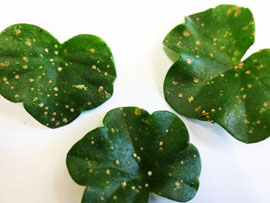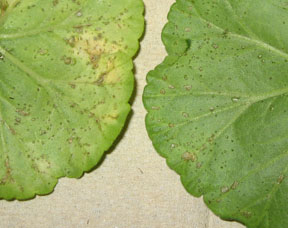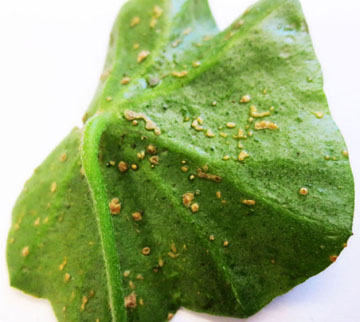Under the Scope Feature
Oedema Issues
March 2014
Oedema (edema) is a physiological condition that develops when the roots of some plants take up water faster than the water is either used by the plant or transpires from the leaf surfaces. This causes water pressure to build up in the mesophyll or internal cells of the leaf causing affected cells to swell to excess.
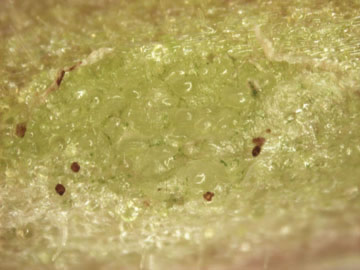 |
| Top: Swollen cells on the underside of a tomato leaf—the early stage of oedema. Bottom: More advanced symptoms where cells have burst and collapsed. |
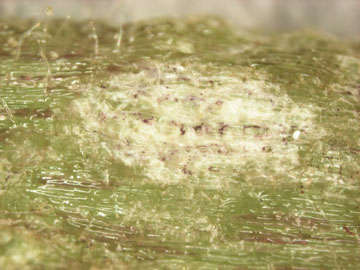 |
This issue is typically discovered after small spots or corky blisters develop on the foliage where cells have burst. These blisters may eventually harden as well as darken. In severely affected plants these corky growths may also develop on petals, petioles, and/or stems.
Oedema is most prevalent during extended periods of cool, cloudy weather when the soil is warm and wet and the air is cool and moist. These conditions are more commonly encountered in greenhouses or indoor situations during winter months.
Although almost any broad-leaved plant may be affected, geraniums, begonias, tomatoes and certain fleshy leaved plants such as jade are particularly sensitive to conditions which lead to the development of oedema.
Avoid overwatering susceptible plants; during winter months these plants should be kept slightly on the dry side. Keep the relative humidity below 70%, and improve the flow of air over the leaves by allowing adequate space between plants and/or using fans to move air. Affected plants often recover with the return of more favorable growing conditions in spring and early summer.
Left & Below: Symptoms on the upper and lower leaf surfaces of a highly susceptible geranium. |
Learn More
- Cornell Plant Disease Diagnostic Clinic: fact sheet
- Royal Horticulture Society: fact sheet
CU-PPDC News Feed
Diagnostic review reports and the latest lab updates delivered directly to you. Learn how!

